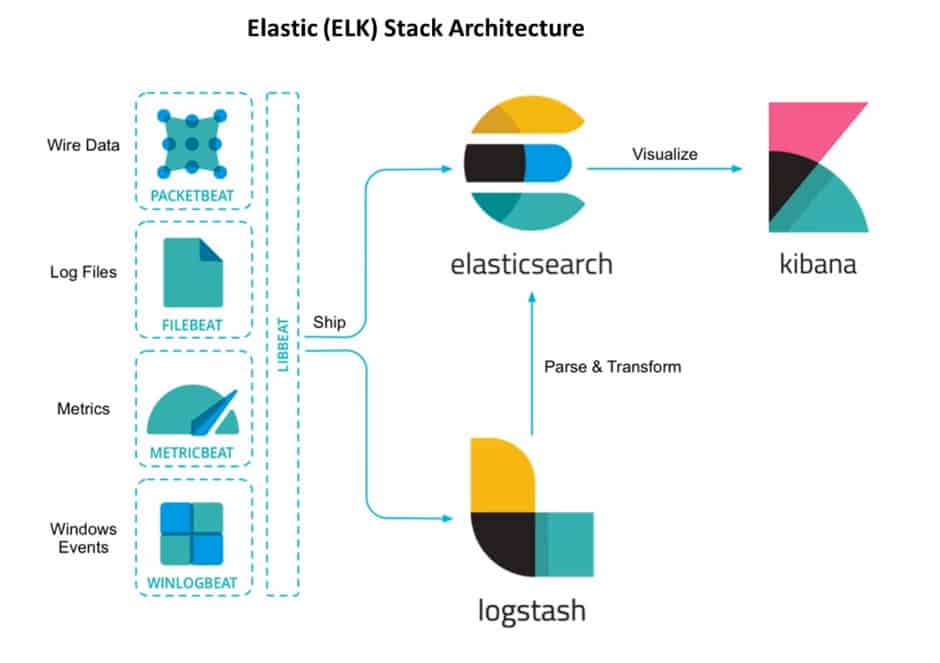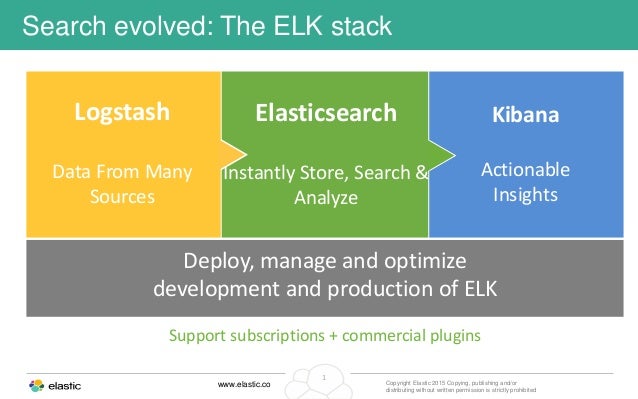


So even if you have typos in your search queries, or spelling errors, Elasticsearch can suggest relevant search results. Some other advantages of using the Elastic Stack include: Elastic Stack applications can be used to increase employee productivity by enabling users to find the data they need more quickly, and to provide business insights, like Walmart’s discovery that they sell about 156 bananas per second. Using Elastic Stack you can analyze data from any source, in any format, and conduct real-time complex searches and analysis without impacting the performance of your production environments. It originally consisted of three products that formed the acronym ELK, but now includes four:Įlastic Stack enables companies to get a handle on their unstructured data and provide visualizations from multiple feeds to enable real-time analytics. With its scalability, flexibility, and ease of use, the Elastic Stack is well-suited to meet the growing data needs of businesses across various industries, helping them unlock valuable insights and drive informed decision-making.Elastic Stack (formerly ELK stack) is a very powerful suite of open source, enterprise ready tools. In conclusion, the Elastic Stack (ELK Stack) has emerged as a powerful and versatile solution for modern data management, offering organizations a comprehensive set of tools for storing, processing, analyzing, and visualizing their data. Additionally, the stack’s open-source nature allows organizations to customize and extend its functionality to meet their specific needs, while also benefiting from a large and active community of developers and users. The stack is also highly flexible, supporting a wide range of data types and formats, making it suitable for various use cases, such as log and event data analysis, application performance monitoring, and security analytics.Īnother significant benefit of the Elastic Stack is its ease of use, with user-friendly tools like Kibana making data visualization and exploration accessible to users of all skill levels. One of the primary advantages of the stack is its scalability, allowing businesses to grow their data storage and processing capabilities as needed. The Elastic Stack offers numerous benefits to organizations looking to manage and analyze their data effectively. This enables organizations to monitor their infrastructure and applications in real-time, ensuring that potential issues can be identified and resolved quickly. Beats can be installed on various systems, such as servers, containers, and IoT devices, to collect different types of data, including logs, metrics, and network traffic. With Kibana, organizations can gain valuable insights into their data, helping them make informed decisions and drive business growth.īeats, the newest addition to the Elastic Stack, is a collection of lightweight data shippers that collect and send data to Logstash or Elasticsearch. Kibana provides a user-friendly interface for visualizing data stored in Elasticsearch, allowing users to create and share interactive dashboards, graphs, and charts. Kibana, the third component of the Elastic Stack, is a web-based data visualization and exploration tool that works in tandem with Elasticsearch. This flexibility allows organizations to collect and process data from multiple sources, ensuring that valuable insights can be derived from the data. Logstash supports a wide range of input sources, such as log files, metrics, and events, and can parse and transform data using a variety of filters. Logstash, the second component of the Elastic Stack, is a data processing pipeline that ingests, transforms, and sends data to various outputs, including Elasticsearch. Elasticsearch is designed to be highly available, fault-tolerant, and easy to scale, making it an ideal choice for organizations that need to store, search, and analyze large amounts of data quickly and efficiently. It provides a scalable and near real-time search platform that can handle large volumes of data and complex queries with ease. As businesses continue to generate massive amounts of data, the Elastic Stack has emerged as a popular solution for modern data management, offering numerous benefits to organizations across various industries.Įlasticsearch, the core component of the Elastic Stack, is a distributed, RESTful search and analytics engine built on top of Apache Lucene. In recent years, a fourth component, Beats, has been added to the mix, making the stack even more versatile and robust.

The acronym ELK stands for Elasticsearch, Logstash, and Kibana, which are the three key components of the stack. The Elastic Stack, commonly known as the ELK Stack, is a powerful collection of open-source tools designed to help organizations manage, analyze, and visualize large volumes of structured and unstructured data. Exploring the Key Components and Benefits of Elastic Stack (ELK Stack) for Modern Data Management


 0 kommentar(er)
0 kommentar(er)
